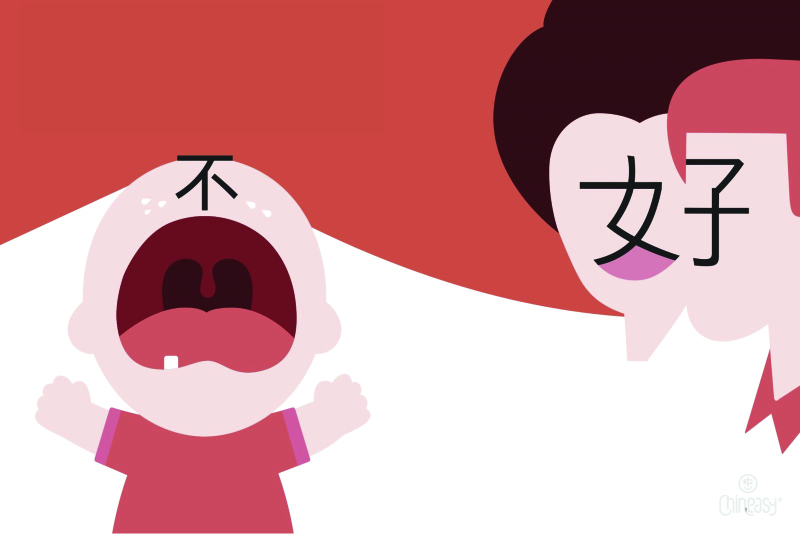In the U.S. educational system, extroverts are praised. These are the students who trigger discussions and always have something to say when teachers or other students ask questions. They aren’t afraid to ask questions, share ideas, and give comments on any topic that gets their attention.
Introverts, on the other hand, learn through listening. They may also have great ideas, but they don’t always express them. This is the model of a silent learner, and it’s how Chinese students are typically viewed in the United States.
The problem here is that a teacher’s expectations for students’ learning styles don’t correspond with the differences in character and approach towards the learning process. Researchers from Greece found that teachers tend to rely on their own perception of the perfect learning style, thus misunderstanding the introverted approach.
The large number of Chinese students in the USA are seen as passive participants in the educational process. However, when these students enter higher education in the United States, their performance is seen as exemplary.
According to a study conducted by researchers from Macquarie University, Australia, western cultures have a lot to learn from the Chinese method of learning.
Three Habits that Make Chinese Students Effective
Macquarie researchers identified three common characteristics that made them more successful and productive in general.
Passive Learning
When someone mentions the term “passive learner,” we link it to a negative connotation. The researchers, however, found that the passive learning method can fuel a hardworking, diligent, and obedient studying process.
In a classroom with a boring atmosphere, American students will usually break the silence by asking questions and commenting on the teacher’s claims. Contrary to popular belief, passive learners also need closer interaction with their teachers. However, most of them will wait to ask their questions after class.
In China, the closer relationship between the teacher and their students is developed beyond the classroom setting. Teachers often visit the parents of their students, so they can talk about learning difficulties and potential solutions. They encourage their students to approach them after class if they have any misunderstandings.
In western cultures, the concept of passive learning shouldn’t be viewed as a flaw. Some students tend to be obedient and don’t want to disrupt the teacher and other students while speaking. They won’t speak up unless someone directly asks them a question. In the case of a Chinese student, it’s cultural heritage. They are taught that relationships are founded on authority, responsibility, and respect. This student will stay passive not because they don’t know what to say, but because they find it rude to speak when not asked.
We don’t want to put only Chinese people in the category of passive learners, though. Some students are more introverted, or even socially anxious. Teachers shouldn’t underestimate their learning potential just because they seem more passive than other students. Instead of criticizing them for not speaking up, they should encourage these students to approach after class with any questions or issues they have.
Silent Learning
If you watch a traditional Chinese movie, you’ll easily notice the depiction of authority and obedience. It doesn’t matter what the students are learning. It may be math or martial arts; the hierarchy is always there. Chinese classrooms haven’t changed much in that aspect. The students are still quiet, and the teachers have high authority.
An American teacher would feel uncomfortable in such a classroom. In their book Teaching Students from Overseas, Brigid Ballard and John Clanchy described that experience as strange, at least at the beginning.[3] They didn’t have any complaints about the hard work that Chinese students invested in their studies. They completed all the assignments and additional work that the teacher suggested, but didn’t show any reaction during class.
This is because the students do not question the knowledge of their teacher. They believe they are being taught well, and they want to absorb as much of the lecture as possible without disrupting it. This model is opposite to the more egalitarian western method of teaching, where students are viewed as independent thinkers, who should nurture a more equal relationship with their teachers.
If we try to trace this learning culture back, we’ll inevitably come down to the principles of Confucianism. This teaching imposes respect for the authority of the teacher. It is based on the principles of hierarchy. When American teachers are trying to get Chinese students more active in the culture, they shouldn’t force the learners to defy their culture if that’s not something they want to do. Instead, they should respect their need to stay diligent and modest during the learning process. Most of these students have great listening skills. They absorb a lot of what they hear in class, and they are persistent in doing homework. Those are good learning skills, which we shouldn’t try to outshine with extroverted behavior.
In China, teachers have great responsibilities as well. It is expected of them to have deep knowledge to transfer. They should be great role models of ethical behavior, and they should be able to answer any question that the student asks. Instead of viewing silent students as passive observers of the educational process, maybe we should see them as an encouragement to become better teachers.
Rote Learning
This was the third major characteristic that Macquarie researchers identified among Chinese students in western schools. Their learning style is based on rote-learning, based on repetition and memorization. By definition, this studying style is seen as inferior, since memorization doesn’t always come hand in hand with comprehension. Students may learn a lecture by heart without understanding its main point.
However, rote learning is not bad nor good by itself. When the student uses memorization techniques without trying to understand the point, it’s not effective. However, as a tool used for remembering facts, it’s actually useful. When students try to remember the number of senators in the American Senate, rote learning is the only way. When they try to study history and they deal with many dates and factual data, they have to memorize some of it.
In literature, two general methods of learning are identified:
- Deep learning approach, which takes the meaning as the foundation of building knowledge. When reading a history lecture, the student will visualize the events. They will try to understand why things happen. However, they may have a problem remembering the dates without the implementation of memorization techniques somewhere along the way.
- Learning based on memorization, which is typical for the early stages of education. This is nothing but a simple tool for learning, and it’s necessary for memorizing things like the multiplication table, foreign words, and dates from the history lesson. It is great for basic information. From there on, the student can build up on it.
Effective learning is comprised of both approaches. Although the Chinese learner is prone to repeating and memorizing information, they aren’t prevented from understanding it. The higher education in China is heavily based on exams. When students study for exams, they have to rely on memorization whether they like it or not.
When combined with the deep learning approach, it’s not necessarily a bad strategy.
We Have a Lot to Learn from Chinese Students
The typical Chinese student is perceived as obedient, silent, passive, and prone to memorization. In western cultures, these characteristics are viewed as inferior. American teachers encourage the students to speak up whenever they think of a question. They want them to learn through discussion.
By failing to understand the social-cultural context behind the behavior of Chinese students, we use the wrong labels. Their academic performance at all levels proves that their learning style is effective.
Chinese students are viewed as high achievers, especially at university level. Contrary to common sense, their typical learning style is perceived as inferior. Rote learning, silence, and passivity don’t sound well as learning methods. However, these are characteristics of discipline, respect, and good listening skills. When we put it like that, the Chinese way doesn’t seem bad at all.
The American educational system isn’t perfect. It has its flaws, mainly linked to the inability of teachers to hold students’ attention. The students are not focused enough, especially when allowed to use technology without proper control. They expect their teachers to entertain them; otherwise they aren’t willing to put any effort in the learning process. It seems like they lack the exact characteristics that Chinese students are known for.



